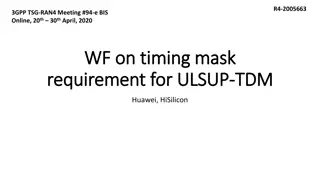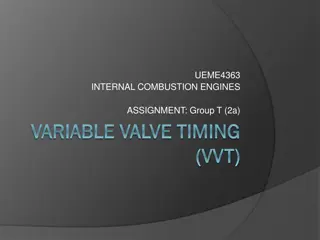When Should a Timing Belt Be Changed on a BMW
A timing belt on a BMW should typically be changed every 60,000 to 100,000 miles, depending on the model and engine type. However, many modern BMWs use timing chains instead, which are designed to last longer. Always refer to your owneru2019s manual
Uploaded on Jul 12, 2025 | 2 Views
Download Presentation

Please find below an Image/Link to download the presentation.
The content on the website is provided AS IS for your information and personal use only. It may not be sold, licensed, or shared on other websites without obtaining consent from the author.If you encounter any issues during the download, it is possible that the publisher has removed the file from their server.
You are allowed to download the files provided on this website for personal or commercial use, subject to the condition that they are used lawfully. All files are the property of their respective owners.
The content on the website is provided AS IS for your information and personal use only. It may not be sold, licensed, or shared on other websites without obtaining consent from the author.
E N D
Presentation Transcript
When Should a Timing Belt Be Changed on a BMW?
The timing component ensures engine valves and pistons operate in perfect synchronization for efficient performance.
Understanding your BMW s timing system is critical for maintaining engine longevity and avoiding costly damage.
BMW Models and BMW Models and Timing Belts Timing Belts
Most modern BMWs use timing chains, but some older models were equipped with rubber timing belts.
Identifying your models timing system helps determine whether belt replacement is part of your maintenance schedule.
Difference Between Difference Between Timing Belt and Chain Timing Belt and Chain
Timing belts require regular scheduled replacement based on mileage or age to prevent mechanical failure.
Timing chains are more durable and typically last the engine s lifetime with proper lubrication and tension.
Recommended Recommended Replacement Interval Replacement Interval
BMW timing belts should be replaced between 60,000 and 100,000 miles, depending on model and usage.
Following the manufacturer s service interval prevents unexpected breakdowns and serious engine damage.
Consult Your BMW Consult Your BMW Owner s Manual Owner s Manual
Refer to the owners manual for accurate timing belt replacement intervals specific to your BMW model.
Factory service schedules offer the most reliable guidance for belt inspection, servicing, or replacement needs.
Warning Signs of a Warning Signs of a Worn Timing Belt Worn Timing Belt
Listen for ticking sounds, engine misfires, or rough idling that may indicate belt deterioration.
Oil leaks near the timing cover can also signal that the belt or tensioner needs attention.
Importance of Importance of Professional Inspection Professional Inspection
Certified BMW technicians can identify early signs of timing belt wear during regular maintenance checks.
Routine inspections ensure timely replacements and help you avoid unexpected roadside failures or engine damage.
Conclusion Conclusion
Timely replacement of a BMW timing belt ensures continued performance, reliability, and engine protection.
Always follow your model-specific guidelines and consult professionals for safe, cost-effective maintenance planning.
FIFTH GEAR A U T O M O T I V E /FifthGearAutomotiveLewisville/ /FifthGearAuto /fifth_gear_automotive/























